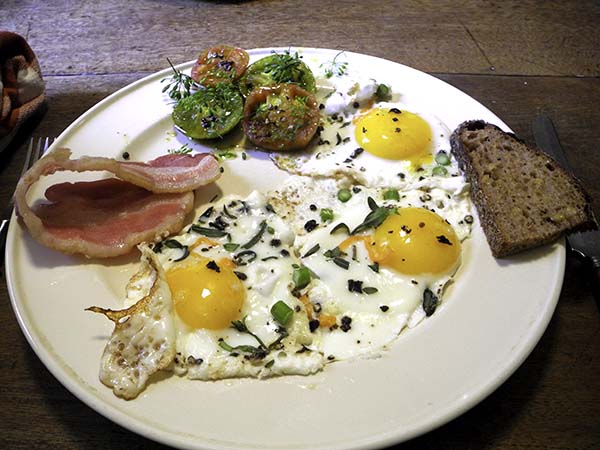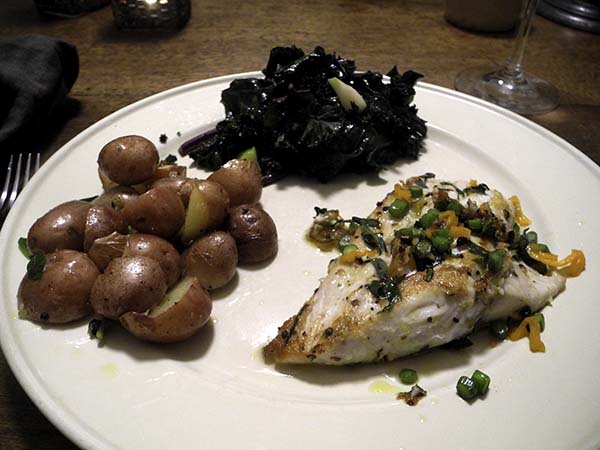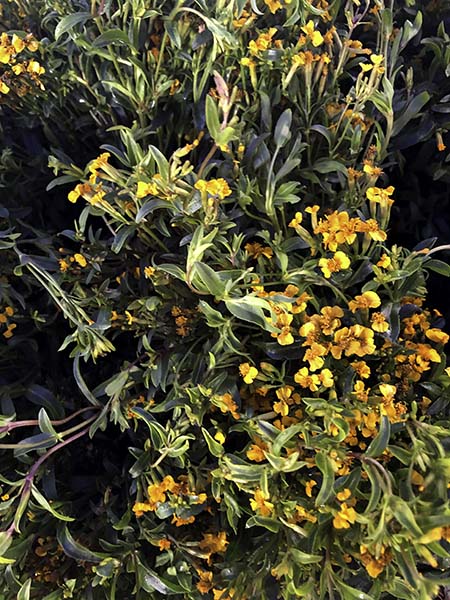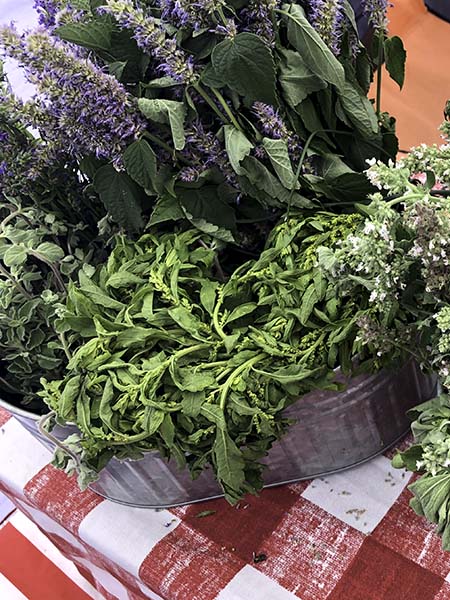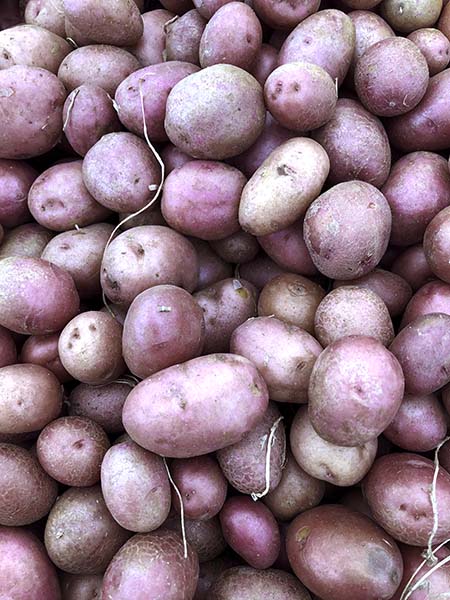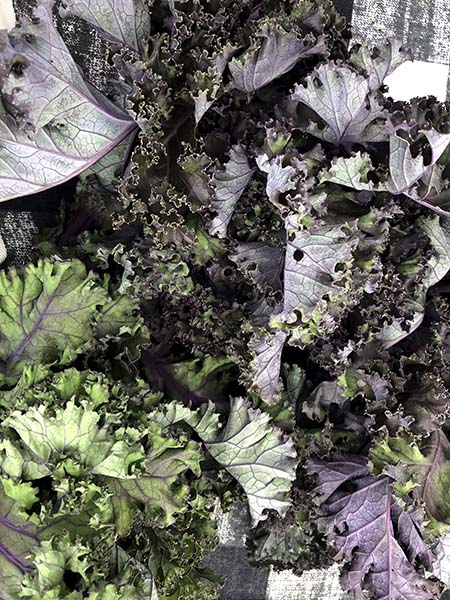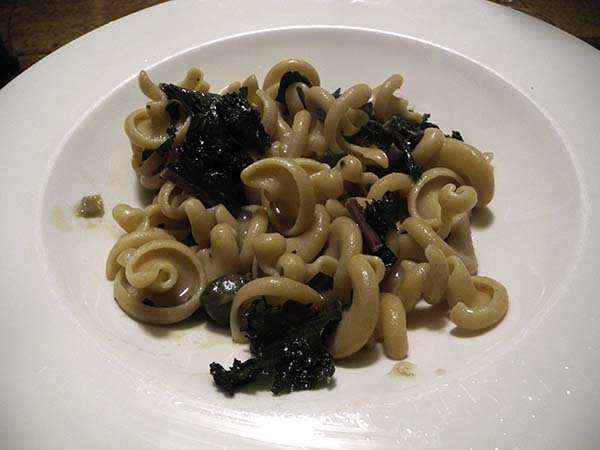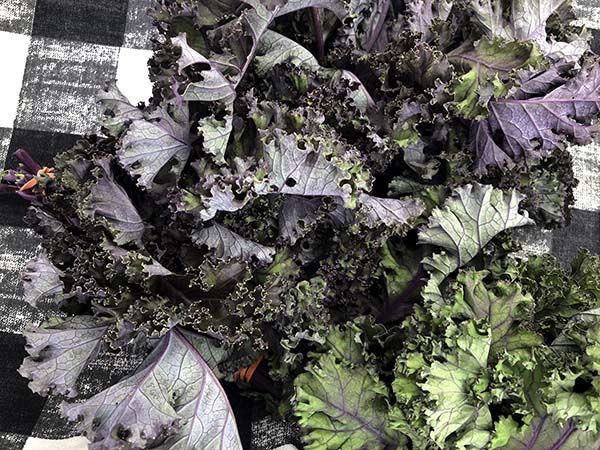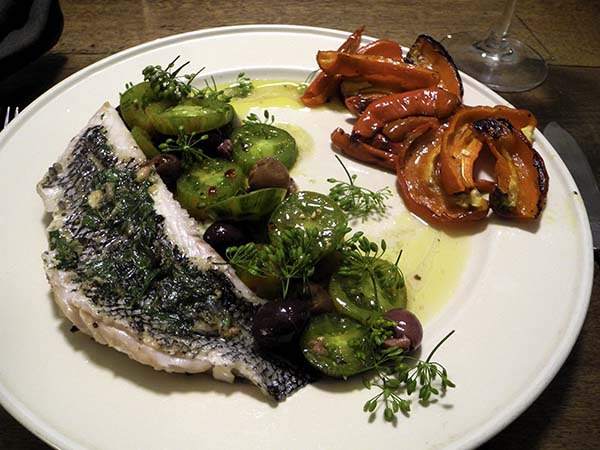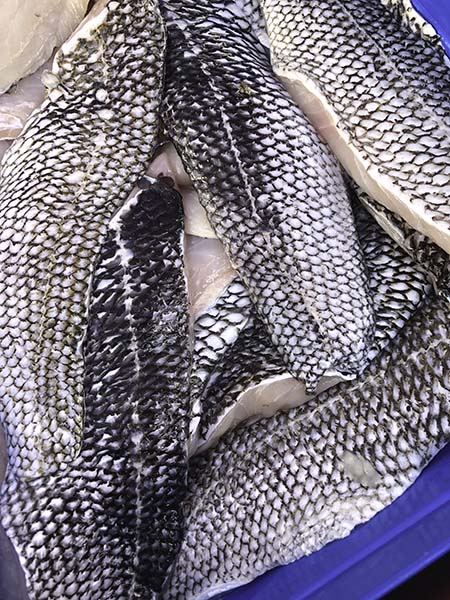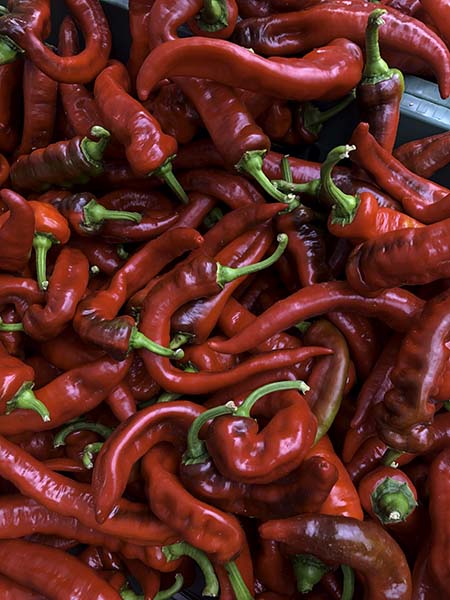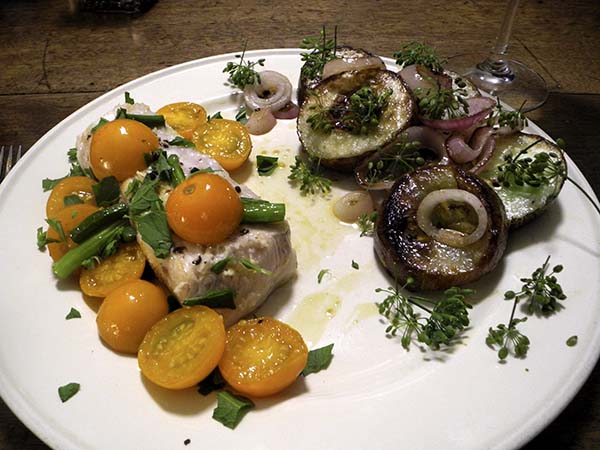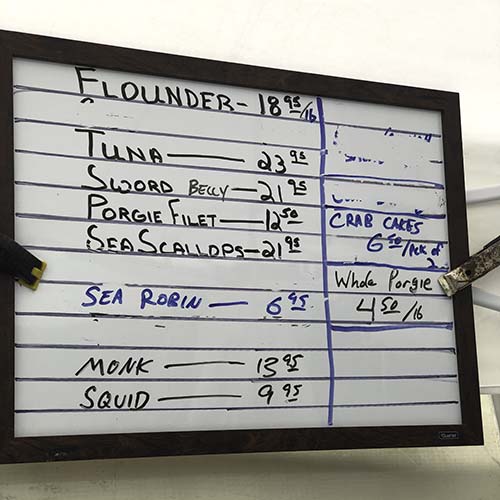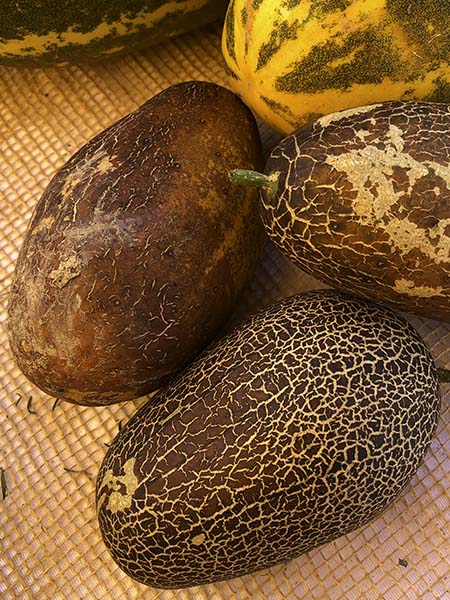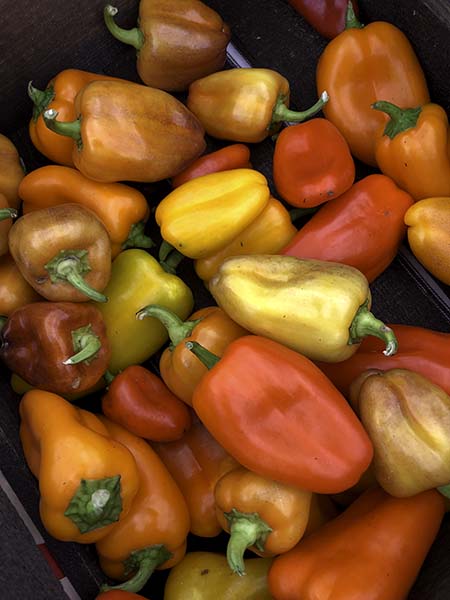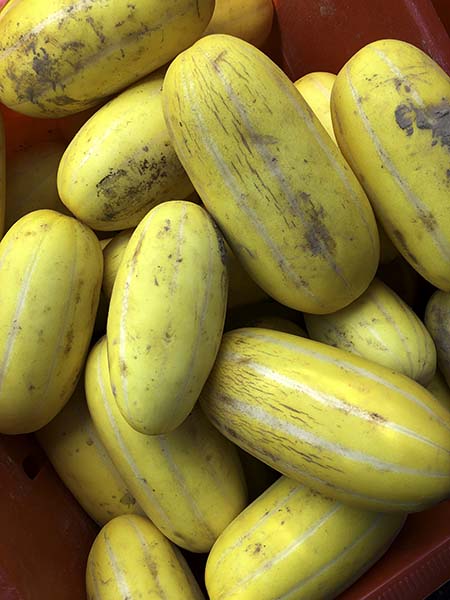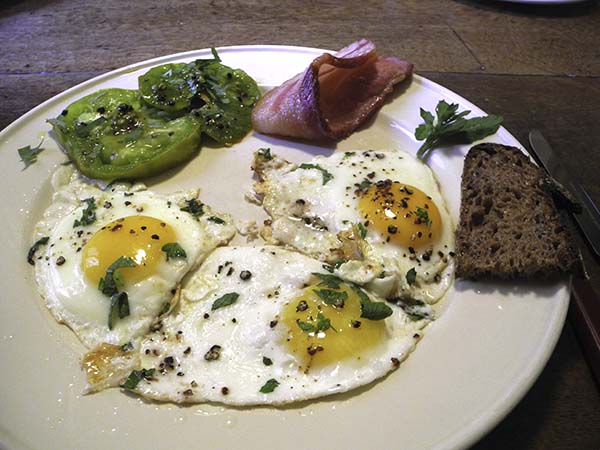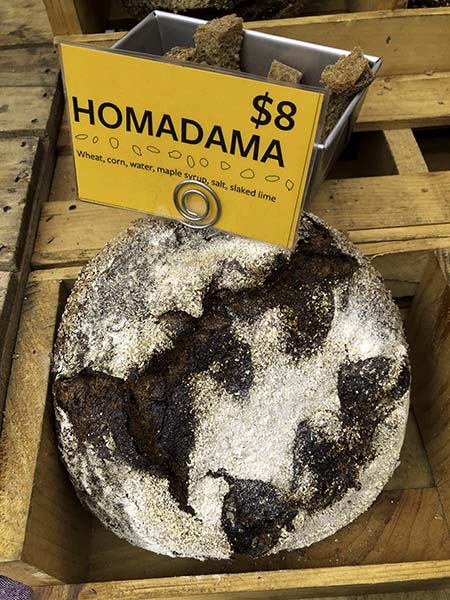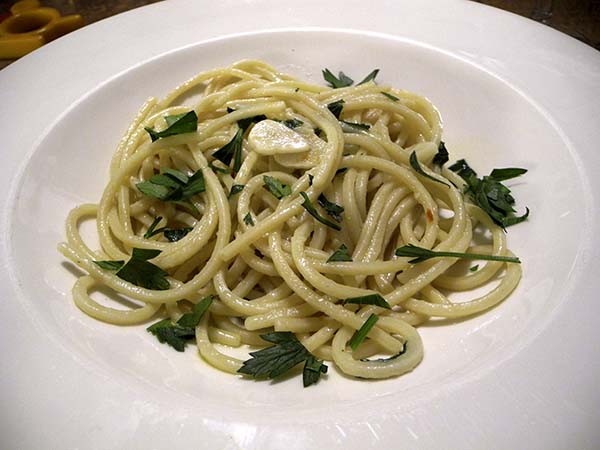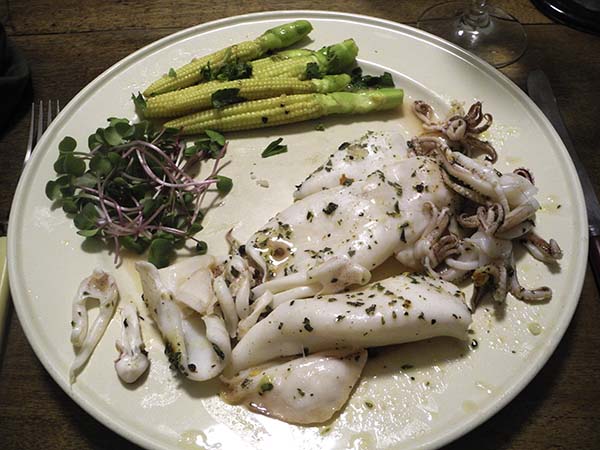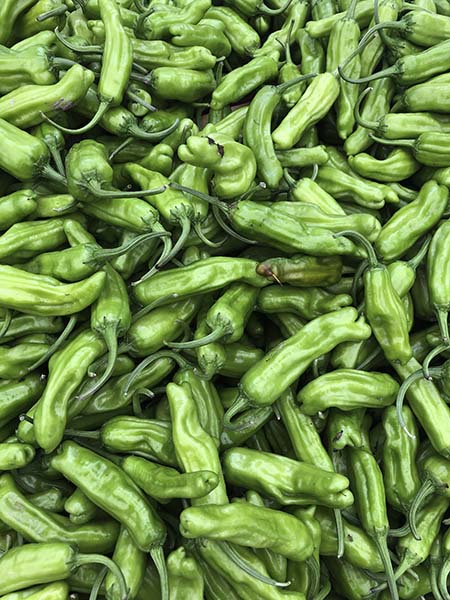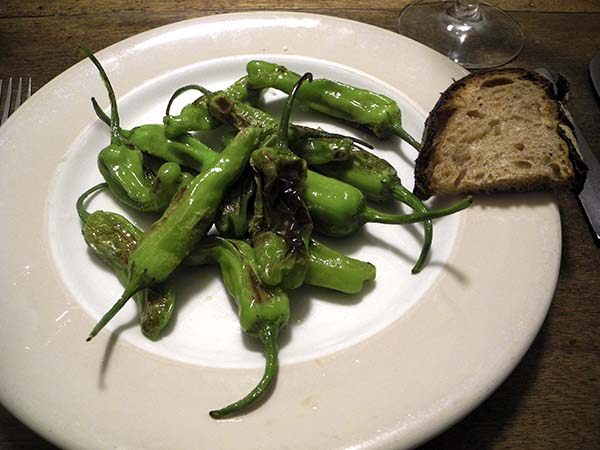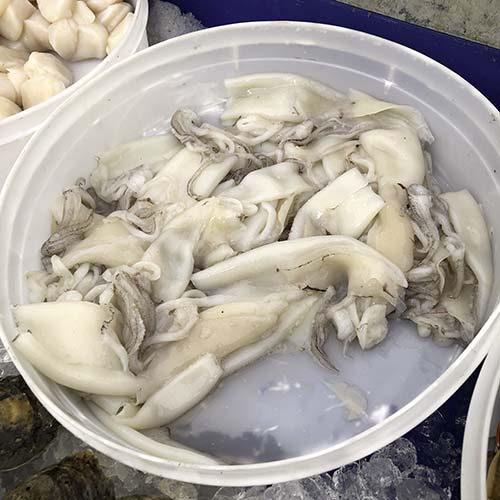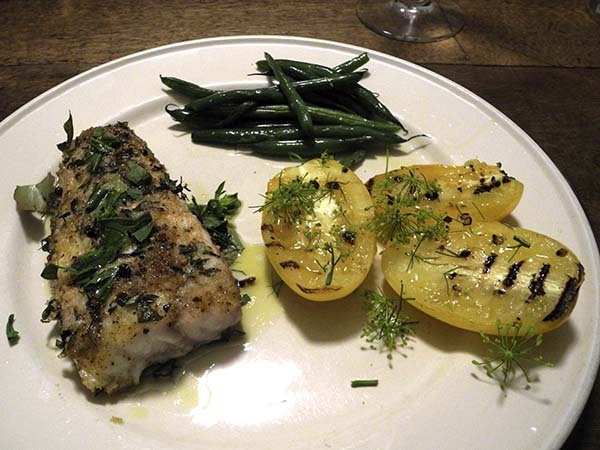
For a while at least, this may become my favorite recipe for a very favorite fish. Lately I’ve wanted to prepare it on top of the range, and when it works, it ends up with an attractive and delicious crispy skin, but until I can manage to do it well each time, and without the anxiety, I’m going to feel better about putting the bass in the oven, after first dressing it a bit at leisure, and then just forgetting about it until they need a quick finish, one that requires absolutely no skill.
Last night it was also totally luscious.
Going this route will be particularly handy with guests, as I’ve already learned.

one thick Striped Bass fillet (a total of 13 ounces) from American Seafood Company, washed, drained, brought to room temperature, divided into 2 sections by cutting down the middle, arranged skin side down on the bottom of a small glazed terra cotta pan resting on a coating of about 2 teaspoons of olive oil, scattered with a mixture of chopped fresh herbs, specifically, ‘za’atar’, or, technically, origanum syriacum, from TransGenerational Farm; thyme and spearmint from Stokes Farm; and lovage from Keith’s Farm, plus one partially-crumbled bay leaf purchased while fresh, from Westside Market [alternatively almost any fresh herb or combination of herbs could be used in this recipe], seasoned with Phil Karlin’s P.E. & D.D. Seafood Long Island Sound sea salt and freshly-ground black pepper, sprinkled with some of my homemade dry bread crumbs and drizzled with a little olive oil, placed inside a 425º oven for approximately 25 minutes, removed when done, sprinkled with a bit of the chopped heavenly herb, epazote, also from TransGenerational Farm, and arranged on the plates, squeezed with the juice of a small organic Mexican lemon from Whole Foods and drizzled with olive oil
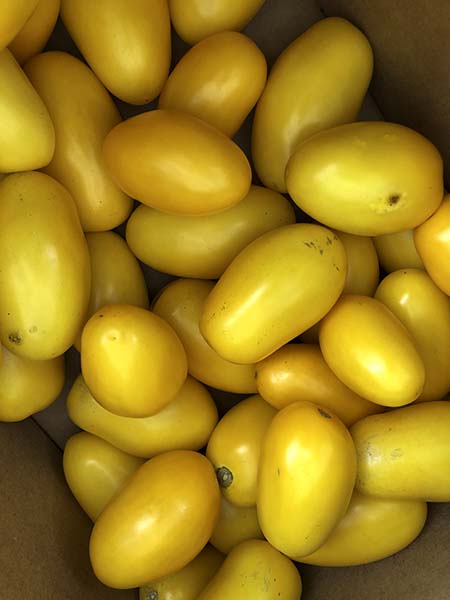
three beautiful yellow plum tomatoes from Stokes Farm, halved, dried, and rubbed cut side down on a plate scattered with some sea salt and black pepper, pan grilled inside a medium size enameled cast iron ribbed pan until slightly softened and marked by the pan, arranged on the plates, drizzled with a tiny bit of white balsamic vinegar, then some olive oil, and garnished with scissored dill flowers from Willow Wisp Farm
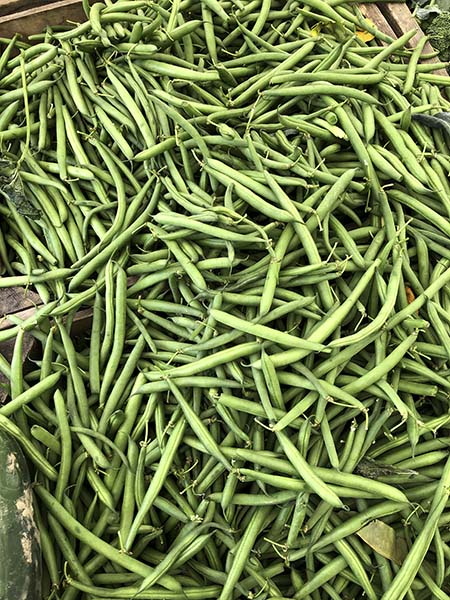
a few ounces of hand-picked haricots verts from Samascott Orchards in Kinderhook, NY, left whole, blanched until barely tender, drained, and dried in the same large antique Pyrex Flameware pot in which they had cooked, now over a low flame, shaking, then set aside inside until the rest of the entrée was just about finished, when they were reheated in a little oil inside a heavy well-seasoned cast iron pan, finished with salt and black pepper
the wine was an Oregon (Willamette Valley) white, Chris Baker Willamette Pinot Gris 2018, from Naked Wines
the music was Lully’s 1684 opera, ‘Amadis’, with an interesting libretto involving “chivalric romance and the doings of gods and goddesses” on an obscure subject suggested by his patron, Louis le Grand, performed by Christophe Rousset leading Van Wanroij, Tauran, Perruche,
Bennani; Auvity, Arnould, Crossley-Mercer; Chamber Chorus of Namur, Les Talens Lyriques, Rousset
